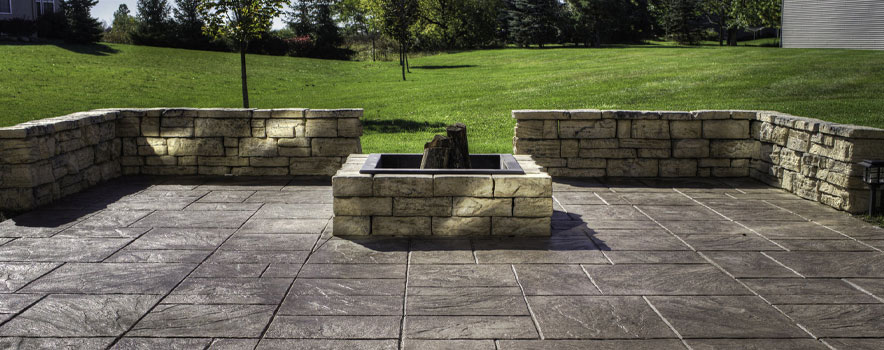
When you hear the terms stone stamped concrete, you probably picture some no-muss, no-frills, boring old slab of gray stone, but stone stamped concrete is actually quite a different material from what you’re used to. Used as a flooring material in commercial and residential applications alike, stamped concrete allows you to pull off an upscale, high-contrast look without spending a fortune on special materials.
With so many different kinds of staining options available on the market, you can easily create a wide range of effects and personalize your concrete with the right stains. The various types of stone used in stone stamped concrete include Portland cement, stone, limestone, slate, sandstone, and even adobe and granite.
If you think that the possibilities for staining your concrete are limited only to patterned colors and textures, think again. You can even add stencils and image credits to make your design come to life. The main thing to keep in mind when planning out your image credit and stencils is that you should always use a durable stencil. You do not want to affix the stencil to your concrete before building up the desired design. Stencils can be constructed using common household tools, and they are usually easy to remove once the image credit or design has been applied.
Before you begin installing stamped concrete, you’ll need to create your image credit. An image credit is simply a drawing or blueprint that shows how the pattern will look once built up. This image credit can be quite simple or can include complex images such as trees, landscape features, and even abstract images. For larger patterns, it is best to use two different colors. Using three colors can create a more dramatic effect. You can also experiment with different sizes, shapes, and widths of patterned borders to enhance the effect.
After you have created your image credit, you can begin staining your stone stamped concrete. When working with stamped concrete, it is important to pay close attention to the details. Stamped concrete must be stained or coated with an acid stain to prevent it from etching. This prevents the concrete from looking like a worn-out patch of concrete. The acid in the stain chemically bonds with the minerals found in the stone, making them bond together.
To begin the staining process, you will need to mix paints that are appropriate for the surface being stained. You will also need an acid stain to apply to the concrete. Make sure that you are using the correct type of acidic cleaner. If unsure, consult the label on the bottle. Acidic cleaners are less toxic and easier on the environment than other types of cleaners. A spray bottle and paper towels are all you need to start the staining process.
Before staining, you should preheat the surface to make sure that the chemical bonding is properly done. The heat makes the acid bonds stronger. Once heated, the acid is applied to the concrete one layer at a time. The surface should be allowed to dry for about 24 hours before placing anything on it. If you are staining a concrete surface that already has a stain, allow the first coat of stain to dry before you apply a second coat.
To see how the stone is being imprinted, you will need to expose the stone to ultraviolet light. A lamp at the end of the tarp or plastic sheet will provide enough light for the imprinting. You can watch the stone as it forms an image of your choice. Repeat the same process with the other side of the stone. After the stone is imprinted, clean the surface with a mild detergent and buff it until it shines.
After you have finished stamping the image on the concrete, place a mat beneath it to keep it from moving while it is being polished. Use a rubber or plastic mallet to tap the stone’s surface until it is flat and smooth. When finished, the stone will be shiny and ready to use. This classic method of decorating any outdoor area makes a durable and beautiful surface suitable for all kinds of decorations.
